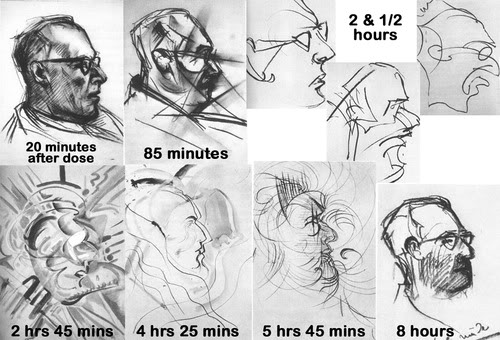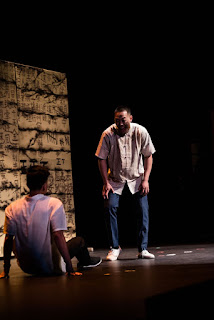Week 7: Neuroscience and Art
The integration of neuroscience, as enabled by technological advancements, enables to better understand the brain and expand their artistic horizons. As evidenced by the creation of brain-scanning technology, Anker produced the FMRI Butterfly, which was done by overlapping a butterfly's image over fifteen brain scans. Her technique created an illusion that makes the butterflies appear different visually, despite the fact that each butterfly is identical in print. As mentioned in lecture, another artist that explored neuroscience in his art was William Straten, who created glasses that inverted images upside down. Interesting, we could see that these two artworks, which distort the the perspective of the observers, touches and expands upon the point that art surrounds us in ways that we often don't have the perspective to fully comprehend. Thus, by enabling observers to experience the art actively as opposed to passively observing the art, Straten seeks to strike home this point.
http://www.artcritical.com/wp-content/uploads/2012/04/Suzanne-Anker-MRIButt3.jpg
Additionally, I find it interesting how chemical signals create our memories, stir our emotions, and trigger thoughts. Hallucinatory drugs, which are an amalgamation of various molecules and chemicals, affect the way which our brains, send, receive, and process signals - thereby affecting how we perceive our surroundings. Rather than utilizing technology to create neuroscience-influenced art, Albert Hofmann used his psychedelic experiences to inspire his own work by chronicling his experience after consuming LSD.

http://cdn8.openculture.com/wp-content/uploads/2013/10/16064533/artist-lsd.jpg
http://www.artcritical.com/wp-content/uploads/2012/04/Suzanne-Anker-MRIButt3.jpg
Additionally, I find it interesting how chemical signals create our memories, stir our emotions, and trigger thoughts. Hallucinatory drugs, which are an amalgamation of various molecules and chemicals, affect the way which our brains, send, receive, and process signals - thereby affecting how we perceive our surroundings. Rather than utilizing technology to create neuroscience-influenced art, Albert Hofmann used his psychedelic experiences to inspire his own work by chronicling his experience after consuming LSD.

http://cdn8.openculture.com/wp-content/uploads/2013/10/16064533/artist-lsd.jpg
Another piece of art I found particularly engaging was Cajal's portrayal of neurons in the cerebellum. The artist described these neurons, which are cells that the brain is composed of, as butterflies of the soul, metaphorically giving these neurons life and painting these neurons in a way to emphasize the parallels they have to the real world and bringing incredible dimension to his artwork.

Works Cited
Vesna, Victoria. YouTube. UC Online Program, 17 May. 2012. Web. 21 May. 2017.
"Consciousness Involves Noncomputable Ingredients." The Third Culture - Chapter 14. John Brockman, n.d. Web. 21 May 2017.
"Introduction to GCP." The Global Consciousness Project. Roger Nelson, n.d. Web. 21 May 2017.
"Life and Discoveries of Santiago Ramón y Cajal". Nobelprize.org. Nobel Media AB 2014. Web. 21 May 2017. <http://www.nobelprize.org/nobel_prizes/medicine/laureates/1906/cajal-article.html>
Anker, Suzanne. "Neuroculture." Nature Reviews Neuroscience. N.p., n.d. Web. 21 May 2017.




It is really interesting how hallucinatory drugs used to affect how our brain processes signals can be utilized in art. As these drugs are not necessarily legal, how do you think the ethical implications can influence the degree artists use drugs to create neuroscientific art? To me, it almost seems a little heartless to make the subject suffer through these psychedelic experiences just so an artwork can be produced. I also agree with you that the portrayal of neurons brings insight for us to understand our brain activities in a brand new dimension.
ReplyDeleteI love the central theme you observed from the two artworks mentioned in the beginning. I agree that both these artworks, Anker’s work in the way she merged novel brain-scanning technology and images of a butterfly to create an illusion, and Straten’s glass inversion project, present a new perspective to the viewer and create a deeper understanding of the brain. I believe that artworks like these can truly expand and challenge our knowledge of the brain just as much as important "scientific" achievements.
ReplyDelete